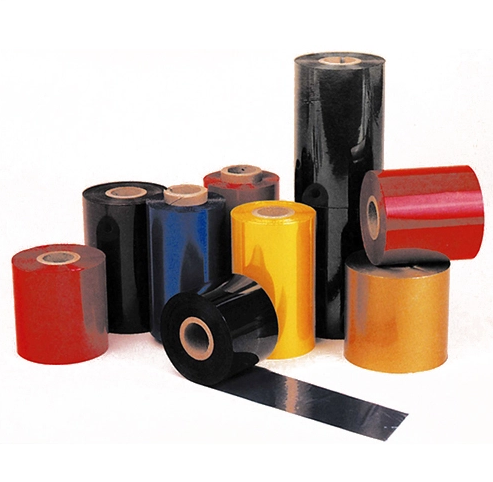Barcode Ribbons in India
In today’s digital age, where efficiency and accuracy are paramount in supply chain management and retail operations, barcode technology plays a crucial role. Behind every scan lies a key component that ensures the seamless transmission of data: barcode ribbons in India. These often-overlooked yet essential consumables are integral to the functionality and reliability of barcode labels.
What are Barcode Ribbons?

Although, Barcode ribbons are thin, flexible strips coated with ink or resin used in thermal transfer printers to print barcodes on labels. They are designed to be compatible with various printing substrates, including paper, film, and synthetic materials. The choice of ribbon—whether wax, resin, or a blend—depends on the specific application’s durability requirements and environmental conditions.
Types of Barcode Ribbons
Wax Ribbons:
Firstly, for general-purpose applications where labels are used in environments without exposure to harsh conditions. Wax ribbons offer good durability against smudging and scratching, making them suitable for retail and logistics applications.
Resin Ribbons:
Engineered for more demanding environments where labels must withstand harsh conditions such as abrasion, chemicals, and extreme temperatures. Resin ribbons provide superior durability and image longevity, making them suitable for industrial and chemical labeling.
Wax-Resin Blends:
Combining the best characteristics of both wax and resin ribbons, these blends offer enhanced durability compared to wax ribbons alone while maintaining a level of cost-efficiency. They are commonly used in applications requiring moderate durability.

Applications of Barcode Ribbons in India
Barcode ribbons find applications across various industries:
Retail:
Eventually, Product labeling, pricing, and inventory management.
Manufacturing:
Further, Asset tracking, work-in-progress (WIP) tracking, and compliance labeling.
Healthcare:
In general, Patient identification, specimen labeling, and pharmaceutical tracking.
Logistics:
Above all, Shipping labels, warehouse management, and distribution tracking.
Factors to Consider
Below factors to check for barcode ribbons:
- Printer Compatibility: Ensure compatibility with your thermal transfer printer model.
- Label Material: Choose ribbons that are compatible with the material of your labels (paper, synthetic, etc.).
- Environmental Conditions: Consider factors such as exposure to chemicals, abrasion, and temperature extremes.
- Image Quality: Determine the required print quality for your barcodes (resolution, sharpness, durability).
Conclusion
Lastly, Barcode ribbons are indispensable components in barcode printing technology, ensuring that barcodes are printed accurately and reliably on labels across diverse applications. By understanding the types of ribbons available and their respective strengths, businesses can optimize their operations, improve efficiency, and maintain accuracy in data tracking and management.
As industries continue to evolve and demand higher standards of performance from barcode systems, the role of barcode ribbons in ensuring operational excellence remains crucial. Choosing the right barcode ribbon is not merely about meeting current needs but also about preparing for future challenges in an increasingly competitive marketplace.
Leave a Reply